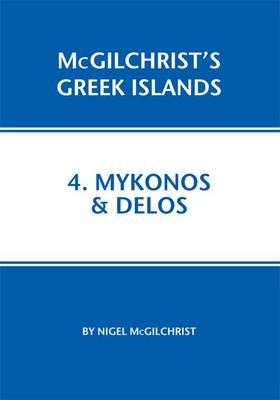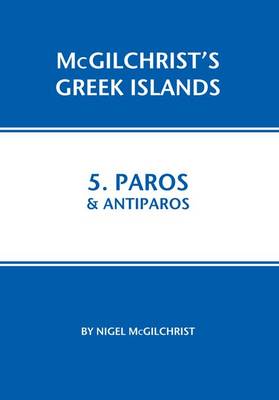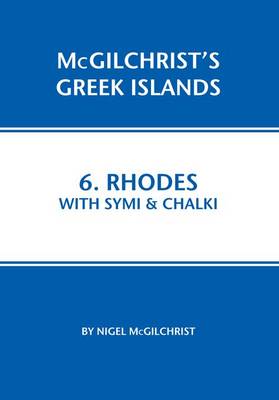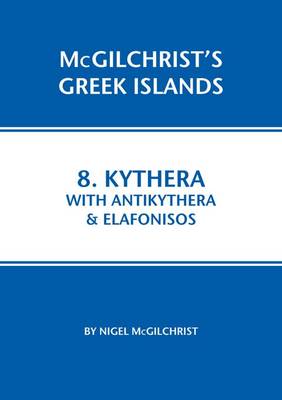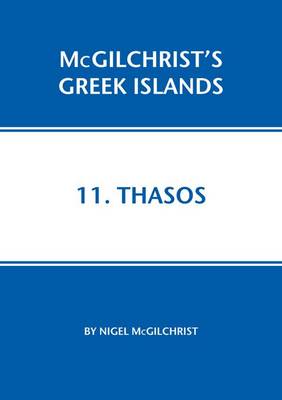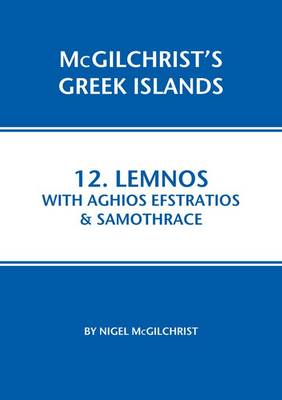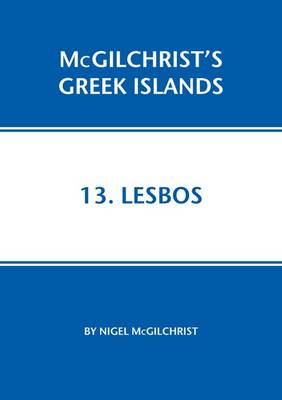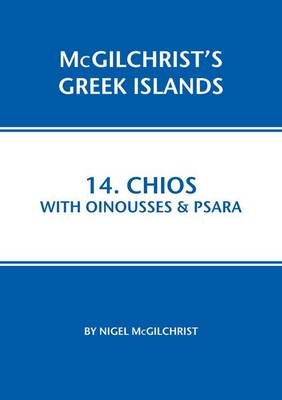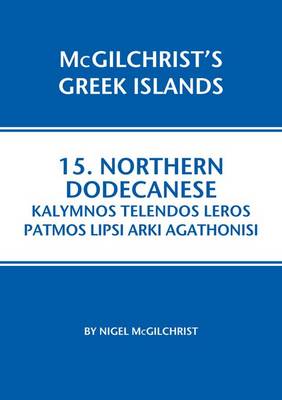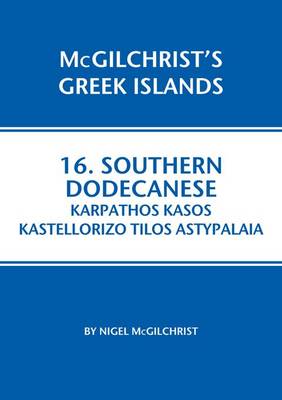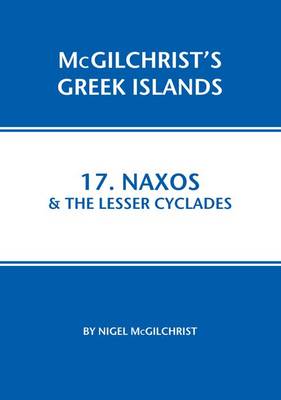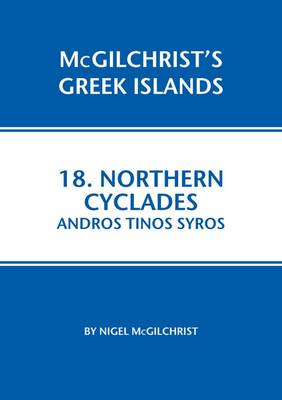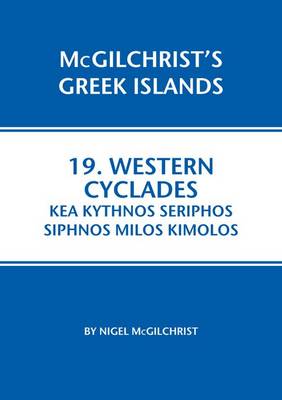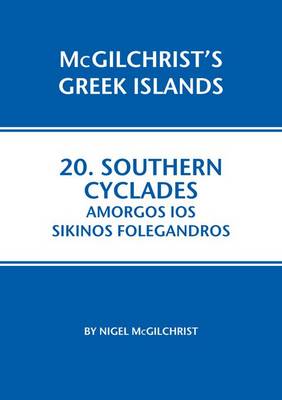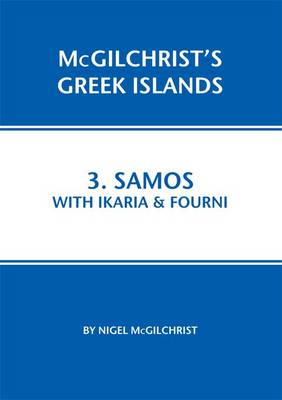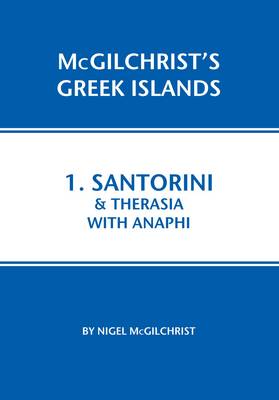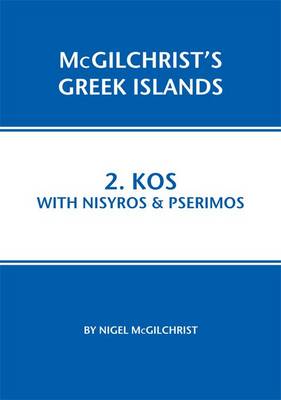McGilchrist's Greek Islands
17 primary works • 20 total works
Book 4
Apollo and Artemis, twin siblings, were born under a palm-tree on Delos. This divine association had the effect of supercharging this tiny outcrop into the most sacred place in the ancient Aegean and consequently one of the most important archaeological areas in the Greek Islands today. The site is immense. On the slopes of Mount Kynthos are some of the best preserved houses from the ancient Greek world, decorated with fine mosaics and painting, while the museum contains finds of astonishing quality. Nowhere else in the Greek world have the remains of a whole city and a sanctuary of such wide-ranging importance been preserved undisturbed by modern building.
Book 5
Antiparos has a 15th century Kastro and a famous and impressive cave. Beyond it the deserted island of Despotiko has the most interesting ancient site currently being revealed, which may prove to be one of the most significant recent finds in the Cyclades.
Book 6
In the 18th and 19th centuries Symi prospered remarkably from sponge fishing and boat building and its town became one of the most beautiful ports in the Aegean. Today the island lives by tourism and day-trips from Rhodes can seem to engulf the town. In addition to exploration of the town, a visit might ideally also include the discovery of the mountainous interior of the island and a journey by boat around its deeply indented coast.
Chalki today is a peaceful retreat, offering uncrowded beaches, scenic walks, a dramatic landscape inland and an attractive seascape all around formed by its outlying islands.
Book 7
Argo-Saronic: Salamis, Aegina, Agistri, Poros, Hydra, Spetses.
by Nigel McGilchrist
Angistri has a fine mantle of pines and its beaches are attractive.
Salamis, forever linked with the sea battle that changed the course of history, has large areas that are effectively a suburb of Athens. The island also has attractive corners and plenty of interest, including the Mycenaean citadel of Kanakia, reached through a forest of pines and now thought to be the place where Ajax grew up, and the cave where Euripides is said to have retreated.
Poros has an elegant town and a tranquil interior, where the important Sanctuary of Poseidon has a beautiful setting but as yet has only been explored to a limited extent.
At the beginning of the 19th century Hydra was a more important town than Athens and prospered from its commercial shipping interests, which endowed the island with one of the most strikingly beautiful ports in the Aegean. The rest of the island (where there is a total ban on motorised traffic) is only accessible on foot; the mountainous interior is grand and panoramic with a number of monasteries.
Spetses today is a place of contradictions, with widely diverging qualities of tourism and of architecture. The older buildings are languishing while new luxury housing flourishes. And, while non-resident cars are banned, motor-scooters create noise and disturbance in their place. The island's celebrated pine forests have been decimated by repeated fires in the last fifteen years.
Book 8
Antikythera has an undisturbed archaeological site at Aigilia, tranquil walks through the interior and remarkable bird life.
Elafonisos is best known for Simos beach, one of the most beautiful in Greece.
Book 9
Book 10
Skopelos has the greatest depth of all the Northern Sporades islands, with its self-sufficiency, richness of architecture and commercial vitality. The appealing wooded coastline has coves and beaches and there are deep forest valleys in the interior. The town has an attractive and varied domestic architecture and an unparalleled number of interesting churches. In the hills to the north, east and west of the Chora are over a dozen monasteries.
Alonnisos has a stronger scent of pine and wild oregano in its air than almost any other island. Its waters are limpid, its forests are intact and its coastline is indented with enchanting coves and beaches. The island is the centre for the Northern Sporades Marine Park, the largest marine conservation area in Europe, set up to protect the habitat of the monk seal and other marine life in the scattering of beautiful islands to the north and west.
The tenacity to tradition on Skyros affects all aspects of life - local song and music, the decorating of houses, the breeding of horses, the preparing of cheese, the nature of festivals. The north of the island is fertile and densely wooded, while the south is wild and rocky. The island's beautiful Chora is rich in a wide range of history and at Palamari is one of most important and impressive Bronze Age sites in the Aegean. The island is home to an ancient and unique breed of wild pony and there are quarries of a flamboyantly coloured marble that was exported in large quantities to Imperial Rome, while the south of the island has the moving and solitary grave of the young poet Rupert Brooke.
Book 11
Book 12
In 1968 the town of Aghios Efstratios was razed to the ground by a massive earthquake from which it has only partially recovered. The interior of the island is mostly uncultivated and little frequented.
Samothrace has a solitude and grandeur that are epic. Its rugged gorges and peaks, its trees, waters, winds and shores possess something of primeval simplicity. It is perhaps no surprise that an important and very ancient cult should have evolved on the slopes of Mount Saos. Few Greek sites raise so many unanswered questions as the Sanctuary of the Great Gods. The walker, climber, naturalist or poet could ask for little more from an Aegean island. Goats are everywhere.
Book 13
Book 14
Oinousses still feels like a forgotten frontier. Its peacefulness, the wide views into Turkey and to Chios and the dense and unusually varied vegetation of its garrigue are its greatest attractions.
Psara is an island where visitors are not often seen. It has two interesting historic sites: the Mycenaean settlement at Archontiki and the fine Monastery of the Dormition.
Book 15
Northern Dodecanese: Kalymnos Telendos Leros Patmos Lipsi Arki Agathonisi
by Nigel McGilchrist
Telendos is notable for the Basilica of Aghios Vasilios and the deserted settlement of Aghios Konstantinos with its dramatic setting.
Leros has peacefulness, beauty and a wide variety of interest for its modest size. It has a coastline of magnificent bays, a handsome chora dominated by a dramatic castle, a number of interesting museums, early rural churches and villages that burst with flowers and trees amidst a landscape of rocky hills. The island's principal harbour at Lakki was built in `Rationalist' style in the 1930s during the Italian occupation.
Both in the imagination and in reality, Patmos is so dominated by the great Monastery of St John that it is easy to forget that there is a lot more to this beautiful island - not least its beautiful and architecturally interesting chora which even without the Monastery would be worthy of attention. The island also possesses a remarkably varied shoreline - deeply indented and modulated, often backed by dramatic hillsides or marked by offshore islets and eroded rock-stacks.
The islands of Lipsi, Arki, Agathonisi and their countless peripheral islets form a wide seascape of consummate and ever-changing beauty. This was in Antiquity the Milesian Sea and these islands lived by protecting and facilitating the immense volume of commercial traffic that passed in and out of Miletus. The best way to understand these islands is by boat, in order to capture some sense of what this corner of the Aegean was like in Antiquity.
Book 16
Southern Dodecanese: Karpathos, Ksos, Kastellorizo, Tylos, Astypalaia
by Nigel McGilchrist
Kasos today is a friendly and unpretentious island, small and easily walkable for the visitor.
In the last decade Tilos has distinguished itself from all other Greek islands by concertedly espousing the causes of wild-life and environmental conservation. The island's dramatically varied landscape, rich in water and oscillating from steep mountains to fertile plains by the shore, helps to sustain its diversity of flora and wild-life as well as to provide countless walking opportunities.
Equidistant between Alexandria and Athens, Kastellorizo has admirably refused to be forgotten by history. Its ancient wine-pressing installations, fine burial places, impressive early walls and its network of cisterns are all evidence of an earlier thriving community.
Perhaps no other island in the Aegean feels as dramatically spacious for its size as remote Astypalaia; the greater part of the island is populated most visibly by a remarkable quantity and variety of birds. Astypalaia has two artistic treasures of importance. Its splendidly sited Chora is one of the most beautiful in the Aegean islands. Second, perhaps more than any island other than Kos, it has a remarkable wealth of Early Christian mosaic floors dating from the 5th century.
Book 17
The waters of the Lesser Cyclades are among the most protected in the Aegean, shielded from the north winds by the great bulk of Naxos, and they can have the appearance of a lake in the middle of a ring of mountains and hills. Almost one third of the Early Cycladic figurines known today comes from the uninhabited island of Keros. Donousa and Herakleia are havens of tranquillity, while Schinousa and Koufonisi are developing fast into centres for visitors.
Book 18
There is restless energy in Tinos and the sense of a ferment of activity - not just in the flow of pilgrims who come to pay their respects to one of Greece's holiest icons, but in the terraces on the hillsides, in the beautiful dovecotes which dot every corner of the island's landscape, in the lovingly carved details on the houses in the `marble village' of Pyrgos and in the calmly bustling activity of the island's intimate rural villages.
Syros has a feel quite different from the other Cycladic islands. The spacious, marble-surfaced elegance of the Neoclassical port Ermoupolis, the only true city in the Cyclades, is a vivid contrast to the usual labyrinthine streets of a Cycladic chora. The west coast of the island to the north of Kini is wild and uncompromising and seems a world away from the port.
Book 19
Western Cyclades: Kea Kythnos Seriphos Siphnos Milos Kimolos
by Nigel McGilchrist
Kythnos has a peaceful rhythm of life which has changed little over time. There are two attractive villages Chora and Dryopida and plentiful hot water springs at Loutra in the northeast. The island's repeatedly indented coastline affords a wide variety of small coves and beaches.
Seriphos has beautiful bays for swimming and offers many opportunities for walking, with a number of ancient rural churches along the way. What stays in the memory longest however is the image of the island's dramatic chora, clustered around its peak far above the island's harbour.
Siphnos is a delight to the eye above all and furnishes more abiding images than many of its neighbours: the stately villages of elegant 17th century churches and well-maintained neoclassical mansions; the rural valleys, full of dovecotes and chapels, watched over by both ancient towers and more recent monasteries from every summit; the chapels built improbably on rocks projecting into the sea; the ancient columns and sarcophagi that adorn the alleyways of Kastro. Aghios Andreas in the centre of the island constitutes one of the most interesting archaeological sites in the Western Cyclades.
Kimolos is a delightful island: peaceful, unpretentious and full of striking landscapes. The northeast of the island is scarred by the quarrying of fuller's earth. The Kastro of Chorio dates from the 15th century.
The volcanic terrain of Milos gives rise to fascinating mineralogy: from the pure obsidian, which has been exported from Milos for at least 8000 years, to kaolin, haematite, alunite, manganese, bentonite, perlite, baryte and anderite. Milos is a busy working island with its population nearly all concentrated in the north; the south and west are wild and largely empty.
Book 20
Ios has a picturesque Cycladic chora and a number of the finest beaches in the Aegean. The island's solitary beauty and grandeur have been compromised in recent years by the construction of roads and a boom in tourism. Recent changes in the local administration suggest that there is a will to redress some of the damage done to the island's traditional social structure.
Sikinos is a remarkably tranquil island with much of its mountainous landscape wild and scarcely accessible. One of the most interesting and best-preserved Roman monuments in the Cyclades is the Monastery of Episkopi, a grand mausoleum which has survived by being converted into a Christian church. The settlements of Ancient Sikinos and at Palaiokastro are both remarkable for the alarming perpendicularity of their sites.
Few islands can boast a more attractive and dramatically sited chora than Folegandros, with its compact mediaeval centre and a chain of beautiful shaded squares. The island is delightful, with several civilised places to stay, pleasant cafes and many attractive beaches. There are a number of interesting walks along the island's network of stone-paved mule paths with majestic cliffs on all sides.
v. 3
Ikaria presents a forbidding wall of high mountains, bearing the force of the winds from both north and south, but the island, particularly the west, has a landscape that is equally rewarding for the naturalist, the rambler, the anthropologist and the photographer.
Fourni has a heavily indented coastline and waters that are remarkably rich in fish and the island is a pleasant and quiet retreat with a delightful chora.
A fifteen minute ferry ride to Therasia gives a glimpse of what Santorini was like a few decades back.
Anaphi is the most arid of the inhabited islands in the Aegean. It feels like a forgotten frontier, remote and dramatic, whose interest lies in its surprises: the sanctuary of Apollo Aigletes, believed to have been first instituted by Jason and the Argonauts, the tiny church of Panaghia Kalamiotissa silhouetted against the sky, the finely decorated Roman sarcophagus lying in a field.
v. 2
